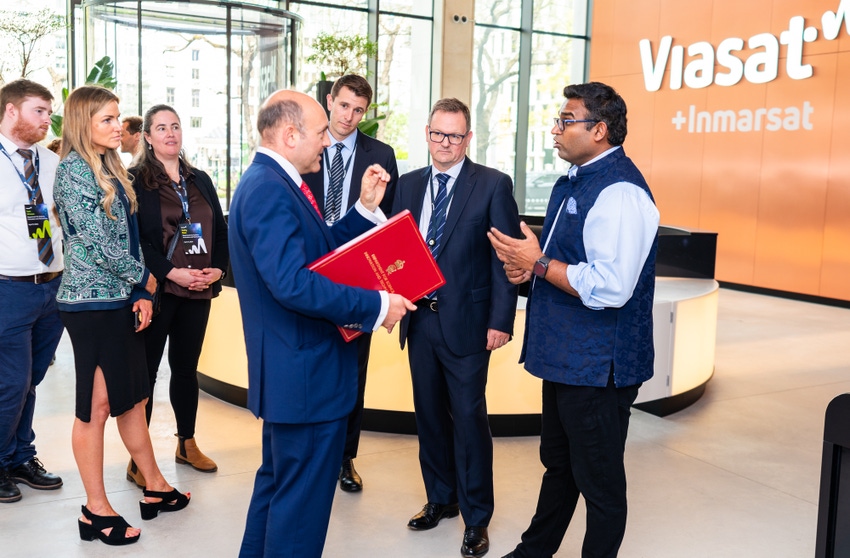Viasat direct-to-device plans have lift-off after Inmarsat merger
Viasat president names direct-to-device among prominent technologies the company is exploring, while remaining conscious of environmental concerns.

Viasat's president, Guru Gowrappan, pointed to direct-to-device (D2D), space-to-space and multi-orbit communications as examples of prominent emerging technologies in the satellite industry during the opening of the company's new international headquarters in London.
While this wave of innovation in the satellite communications sector represents a host of new opportunities, there are also challenges, not least in the form of environmental problems.
According to the company, the opening of the new headquarters marks an integration milestone following the acquisition of Inmarsat – a deal that was announced in 2021 and completed in 2023.
The new site hosts the company's UK network operations center, as well as a new satellite control center, which provides satellite, network and cybersecurity capabilities to customers worldwide. The old center still acts as a backup facility but will be closed later this year. The new headquarters also hosts an innovation lab, where the company explores future applications of the technology.
When it comes to D2D, Viasat has partnered with Skylo, a startup that works with several different providers to transmit narrowband (NB) IoT signals via satellite. This allows it to connect industrial IoT devices that would otherwise be out of reach. Moreover, the addition of satellite communications to chips in mobile handsets means new smartphones support the solution.
During a press roundtable, Yasrine Ibnyahya, senior director for advanced concepts and technologies at Inmarsat, noted that "the beauty is that it requires zero new investments on our end when it comes to satellites or infrastructure," saying that the company can rely on geostationary satellites already deployed for its core applications like maritime security, mobility and humanitarian use cases.
"It's just happened that we're reusing those spacecraft to also cover this brand new market and so that's really our key deployment at the moment," she added.
Viasat and Inmarsat already have roaming deals with MNOs offering services like LTE switchover, where signals can be carried over satellite, as well as backhauling capacity. With D2D technology, however, Ibnyahya expects this relationship will become more intertwined as operators will remain the primary interface for end customers.
Finite resource
There are, however, also some inherent risks to the increasing use of satellite communications. Inmarsat's head of space systems, Mark Dickinson, noted during the roundtable that there is still a lot of research to be done to better understand the possible negative impacts of putting more satellites into orbit.
While sustainable design – such as considering the decommissioning stage – is important, there are other factors. He pointed to satellites burning in the atmosphere, a process that releases heavy metals and, says Dickinson, the environmental consequences of which are largely unknown.
Of particular concern, according to scientists, are possible negative impacts on the ozone layer.
Another area where more research needs to be done, said Dickinson, is the orbit's carrying capacity. As the number of satellites in space continues to grow, scientists have raised concerns over this complex problem.
Drawing parallels with terrestrial climate change, Dickinson noted that decisions made now have the potential to have a big impact in the decades to come.
Read more about:
EuropeAbout the Author(s)
You May Also Like












